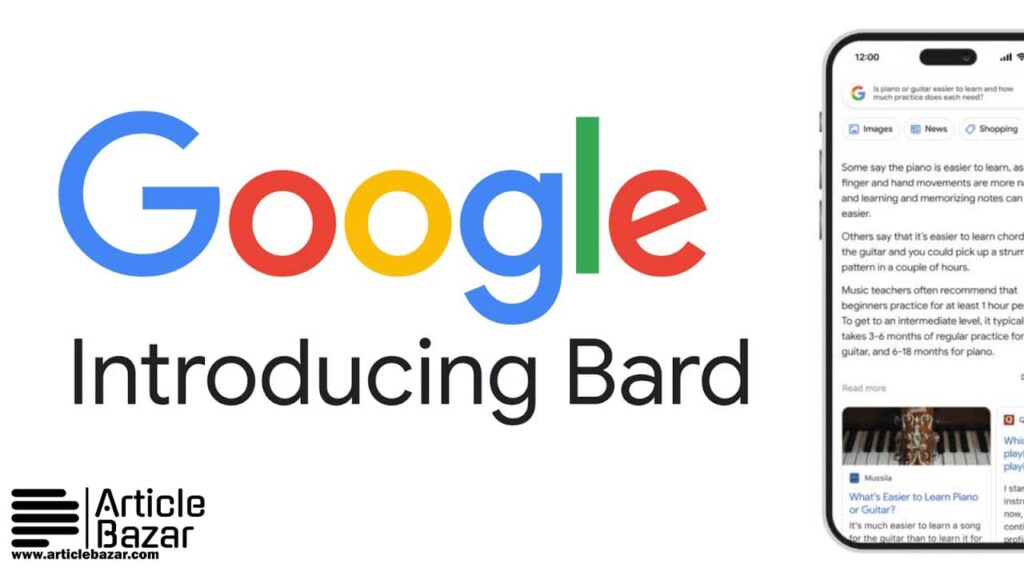Enhancements to Google Bard, including the addition of visual elements, Integration of Third-Party Apps and Services through Extensions

Google strongly believes that AI will help everyone, from professionals to students, parents to developers, reach their full potential. The company is constantly advancing its language research and its models are integrated into a wide range of products and services.
In March of this year, when the world was witnessing groundbreaking innovations in AI, Google introduced its conversational generative AI chatbot, Bard. Since its launch, Google has been working tirelessly to make its chatbot the most effective AI assistant. Recently, Google moved Bard to PaLM 2, a much more capable language model that has led to many recent improvements.
This year at the Google I/O event, the company introduced a number of upgrades to Bard. Google acknowledged that it has made progress with Bard, and the new features show the company’s broad vision for Bard’s future.
Most people use Bard to increase productivity and make life easier. Whether you’re a filmmaker who needs help with a pitch, a busy parent who can’t plan a family holiday dinner, or an entrepreneur who needs brainstorming support, Bard could be a great partner to work with.
At I/O, Google announced updates to Bard that include wider accessibility, versatility, apps and extensions, and new encryption capabilities.
Also Read : ChatGPT

Google Bard Reach and Language Offerings by Google
Bard is now live in 180 countries, and Google is working on it by removing the waiting list and allowing more people to try it in English. And not only in English, Bard is also available in Japanese and Korean. These are the first two languages beyond English that Google is launching as a mechanism for responsible product rollout, gathering feedback and using the information to roll out 40 more languages in the future. Since the big language models are still in their infancy with numerous limitations, Google says it will implement all upgrades in line with its AI principles.
Enhancements to Google Bard
This is probably the biggest upgrade to Google Bard. The chatbot launched with text only, but Google plans to offer richer responses in the future. Users can see images directly from Google Image Search in their answers. For example, a user is traveling to Mumbai and the prompt “Where should I travel to in Mumbai?” Uses. Bard includes visual elements in the answers to match the text.
Google also plans to allow users to challenge Bard’s image using Google Lens. Users who are stuck with art supplies and aren’t sure how to use them in their craft can simply click on an image and ask Bird what to do with it. Google Bard is quick to come up with cool craft ideas.
Google Bard Integration with Third-Party Apps and Services through Extensions
In addition to being versatile, Google will soon offer extensions to Bard that bring some of its apps and services directly into the Bard environment. The company emphasized that users are in control of their privacy and security.
Most importantly, the board will be able to use various services over the Internet with extensions from the best partners. The company will soon integrate Adobe Firefly directly into Bard, allowing users to create completely new images.
Additionally, we’re working to connect Bard with useful Google apps like OpenTable, Kayak, ZipRecruiter, Instacart, Wolfram, Khan Academy, and other partners.
Google Bard Code Citations, Export Button, and Dark Theme for Bard
Google has said that it’s really important for it to put Bard alongside its users and that their feedback is key to improving the product. As part of this, starting next week Google will make code citations even more accurate and show the source of specific blocks of code. The company said the citations will also apply to narrative content from around the site.
In addition, Google will also add an Export button next week. This takes into account feedback from developers who said they liked some of the explanations and generation they saw and wanted to export the code lab, specifically from the Python lab. Developers will also be able to export to the Restlet IDE to build and iterate on their ideas.
Google also introduced a dark theme. This was specifically because many developers were looking for a theme that was ‘a little easier on the eyes’. To make it easier to use Bard to draft emails and documents, Google introduced export actions that make it easy to go from an idea in Bard to a draft in Gmail or Docs.
According to Jack Krafcik, senior product manager at Google, Bard was released in the US and UK based on a lightweight, scalable language model to get feedback and iterate quickly. And since its launch, the company has grown rapidly. Over the past few months, improvements have been made that increase Bard’s math, logic, reasoning skills, and coding abilities, allowing him to not only generate code, but also debug and explain it. Bard already knows 20 programming languages, making Bard one of the best AI tools for collaboration and collaboration.






